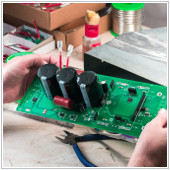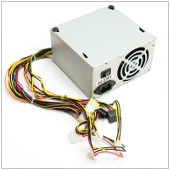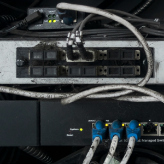 Having access to high-speed internet is important for people who work, chat, or stream online. Sadly, most WiFi systems are unreliable and unresponsive, and depending on the layout of your office, they can create internet dead zones. For businesses that manage most of their tasks online, this simply won’t do. Ideally, internet connections should be fast and available in every nook and cranny of your office. And with the development of Google WiFi, your business may be able to achieve that.
Having access to high-speed internet is important for people who work, chat, or stream online. Sadly, most WiFi systems are unreliable and unresponsive, and depending on the layout of your office, they can create internet dead zones. For businesses that manage most of their tasks online, this simply won’t do. Ideally, internet connections should be fast and available in every nook and cranny of your office. And with the development of Google WiFi, your business may be able to achieve that.
WiFi everywhere
Google WiFi is able to offer fast WiFi across your home or business. Today, people install WiFi expecting it to simultaneously support multiple devices that might even be engaged in high-bandwidth activities such as VoIP and live streaming. The problem, however, is that the WiFi signal is often affected by the thickness of internal walls and the distance from the router. Google alleviates this problem by developing a WiFi system that’s expandable.
You can add Google WiFi points in different areas of your office to spread a strong network signal throughout your entire company. Google uses WiFi mesh technology, where every Google WiFi point builds a high-powered signal where all points combined offer the ideal path for data. As a result, high-speed WiFi is built across the house as all points connect to each other to broadcast a strong, high-speed connection. This means your company can say goodbye to slow downloads, poor call quality, and service interruptions.
Automatically optimize your connection
Google WiFi can also keep operating at high speeds. It employs Network Assist Technology, a feature that automatically optimizes your wireless connection, keeping it fast without any fussing or manual adjustments on your end. Just imagine taking your office laptop or your iPad from your desk to the meeting room, without experiencing internet connection problems. Google’s Network Assist feature allows your devices to seamlessly transition between Google WiFi points in real time, meaning no delays or dead spots.
Manage your network with an app
Google WiFi also comes with a companion app for when you want to manage your network. Available on iOS or Android, the WiFi manager app allows you to reduce bandwidth usage for a particular website, or pause the WiFi connection on certain devices when they’re not in use. You can also prioritize bandwidth for specific devices connected to your network so that you can conduct important VoIP conference calls without any interruptions.
Of course, when it comes to WiFi, security and privacy are top priority. With that in mind, the Google WiFi manager app comes with enhanced security and privacy settings that enable easy management of cloud content, user access control, wireless encryption systems, and automatic updates to keep your business safe at all times.
There’s no telling how well Google WiFi will perform in the market, but if your company values advanced security systems, fast internet speeds, and an easy-to-manage network, then Google WiFi is definitely hardware you should have.
Want to stay on top of the latest hardware trends and developments? Simply give us a call today to find out more.


 Unlike getting a new pair of sweatpants, the process of buying new hardware isn’t as straightforward. Because there are so many choices out there, it’s hard to go with what your friend has to say or which ones are selling at 50% off. If you want hardware that doesn’t only fit but also compliments your computer, go through these five things every buyer should consider if new hardware is on the top of your shopping list.
Unlike getting a new pair of sweatpants, the process of buying new hardware isn’t as straightforward. Because there are so many choices out there, it’s hard to go with what your friend has to say or which ones are selling at 50% off. If you want hardware that doesn’t only fit but also compliments your computer, go through these five things every buyer should consider if new hardware is on the top of your shopping list. If your last business presentation was dim, faded, or encumbered by bulky equipment, it’s probably time for a new office projector. And like any hardware purchase, that means a host of new specifications and measurements need to be learned to avoid sinking money into a useless lemon. If you’re in the market for a quick and painless rundown of what makes a projector worthwhile and what makes one unnecessary, we’ve compiled a number of factors here. Keep reading for our advice on buying a new office projector.
If your last business presentation was dim, faded, or encumbered by bulky equipment, it’s probably time for a new office projector. And like any hardware purchase, that means a host of new specifications and measurements need to be learned to avoid sinking money into a useless lemon. If you’re in the market for a quick and painless rundown of what makes a projector worthwhile and what makes one unnecessary, we’ve compiled a number of factors here. Keep reading for our advice on buying a new office projector. Hardware maintenance and upgrades can consume a big sum of your business’ time and money. But with Hardware-as-a-Service (HaaS), a solution in which you pay a Managed Services Provider a subscription fee and let them take care of all your hardware-related issues, including upgrades, maintenance, and management, you can be sure of your hardware functionality and performance. Here are 5 benefits HaaS will bring to your business.
Hardware maintenance and upgrades can consume a big sum of your business’ time and money. But with Hardware-as-a-Service (HaaS), a solution in which you pay a Managed Services Provider a subscription fee and let them take care of all your hardware-related issues, including upgrades, maintenance, and management, you can be sure of your hardware functionality and performance. Here are 5 benefits HaaS will bring to your business. The good ol’ two button mouse just won’t cut it anymore. They’re unresponsive, uncomfortable and the cord somehow ties itself up every time you put it in your bag. However, buying a new mouse can be a pain, especially when you don’t know what to look for. Do you need a mouse that’s more forgiving on your wrists? Are you looking for a tangle-free mouse? If you’re having difficulty deciding on your ideal mouse, here are some things you should keep in mind.
The good ol’ two button mouse just won’t cut it anymore. They’re unresponsive, uncomfortable and the cord somehow ties itself up every time you put it in your bag. However, buying a new mouse can be a pain, especially when you don’t know what to look for. Do you need a mouse that’s more forgiving on your wrists? Are you looking for a tangle-free mouse? If you’re having difficulty deciding on your ideal mouse, here are some things you should keep in mind. There comes a point in the life of every laptop where its hard drive slows and it begins to function at a snail’s pace. At this point, many people either toss it or retire it to the back of a closet. If you’re one of the latter, then this Spring you may be able infuse life into it. A new software available has been making waves with its ability to revive old laptops, and make them run faster than you could believe.
There comes a point in the life of every laptop where its hard drive slows and it begins to function at a snail’s pace. At this point, many people either toss it or retire it to the back of a closet. If you’re one of the latter, then this Spring you may be able infuse life into it. A new software available has been making waves with its ability to revive old laptops, and make them run faster than you could believe.

 The holiday season is approaching fast, and many people are currently looking to purchase presents for their loved ones. Tech items like computers are likely to be among the most popular gifts. But there are so many different computers out there, meaning that finding the perfect one can be difficult. We’ve outlined some tips that will help you understand more about computer parts and how to make the right choice.
The holiday season is approaching fast, and many people are currently looking to purchase presents for their loved ones. Tech items like computers are likely to be among the most popular gifts. But there are so many different computers out there, meaning that finding the perfect one can be difficult. We’ve outlined some tips that will help you understand more about computer parts and how to make the right choice.